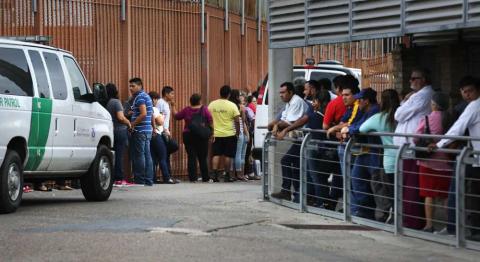U.S. Customs and Border Protection said they have reached capacity at Otay Mesa and San Ysidro and are telling Asylum seekers to not approach the border.
Officials say there are so many people fleeing persecution in their home countries that federal officials can't process all of them. Those seeking asylum are being help in temporary holding cells while border officials work through the backlog.
An official with U.S. Customs and Border Protection said that "no one is being turned away from ports of entry; however, there is a backup for those awaiting processing."
THIS HAS HAPPENED BEFORE
In October 2016, more than 6,000 people asked to come in despite not having documents permitting entry to the U.S. In November 2017, the number of people deemed inadmissible was 2,824, more than double the low of 1,313 reached in March of this year.
In early May this year, about 110 asylum seekers came to the U.S. as part of an organized caravan that journeyed across Mexico to advocate for the right of those persecuted in their home countries.
After the month-long trip, the group reached Tijuana in early May and split into groups to come to the U.S. border. Those from the caravan came from Cameroon, El Salvador, Guatemala, Guinea, Honduras, Mexico, Nicaragua and Sierra Leone. Forty-eight of them are children.
They were detained by ICE.
Asylum seekers are detained until a determination is made if they can prove they have been wrongly persecuted. If they don’t pass the interviews, they get sent back to their home countries. If they pass, they must stay in detention for the remainder of their cases.
According to government code § 1208.13 Establishing Asylum Eligibility, Asylum seekers must prove that they’ve been persecuted because of their race, religion, nationality, political opinion or membership in a particular social group.
ARTICLE 33
Criticisms for the way the CBP is handling the asylum seekers are based largely on the Refugee Convention of 1951.
In a story on KPBS, Deborah Anker, a professor at Harvard Law School's Immigration and Refugee Clinical Program, said the move is a violation of the convention and Article 33.
She said, "There's no question that this violates the statute, it violates our treaty obligations," she said. "You can't turn people away at the border. That's very fundamental ... It's not a gray area."
Border officials say they aren't turning away asylum seekers, and that this is a processing delay.
